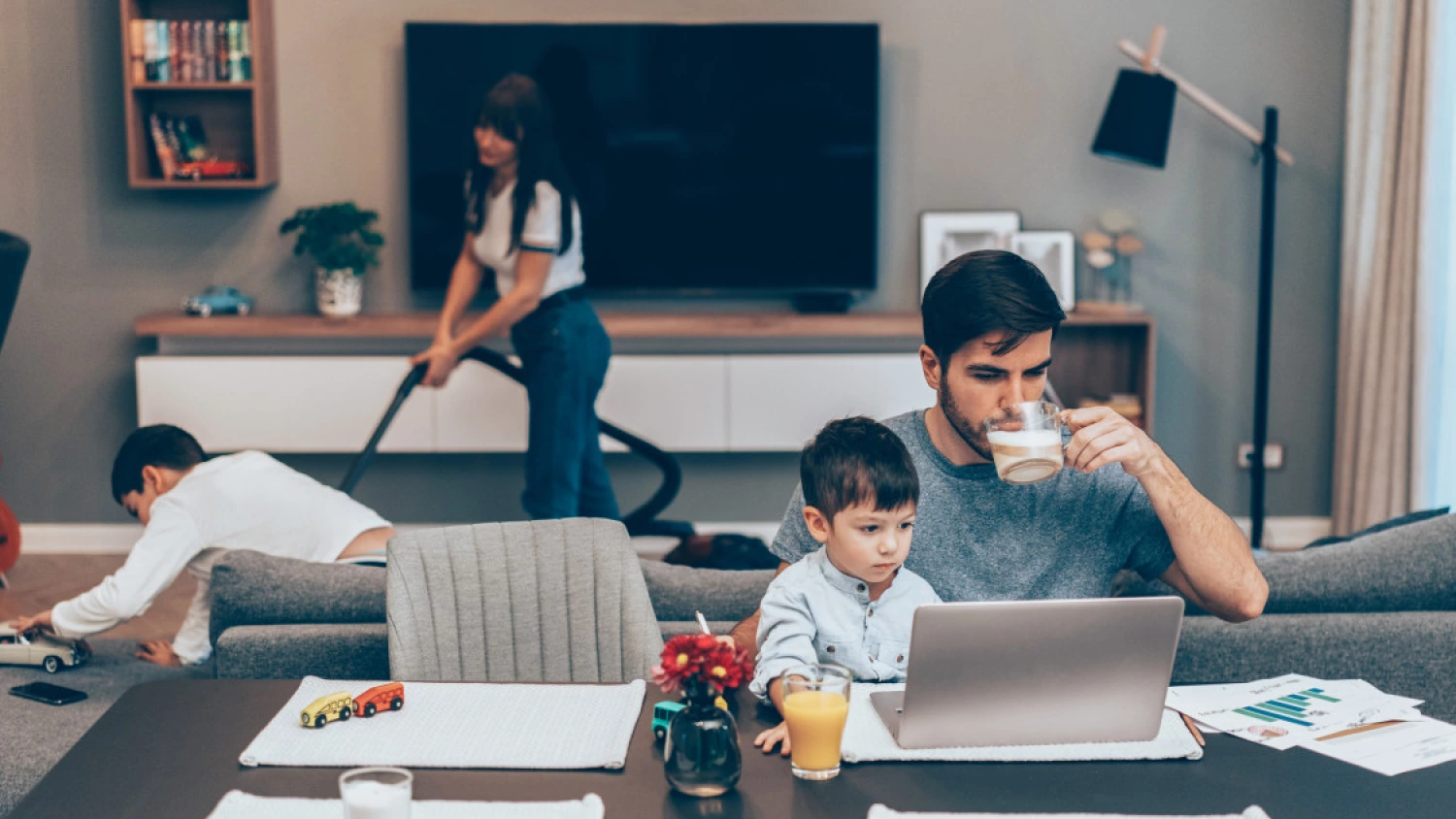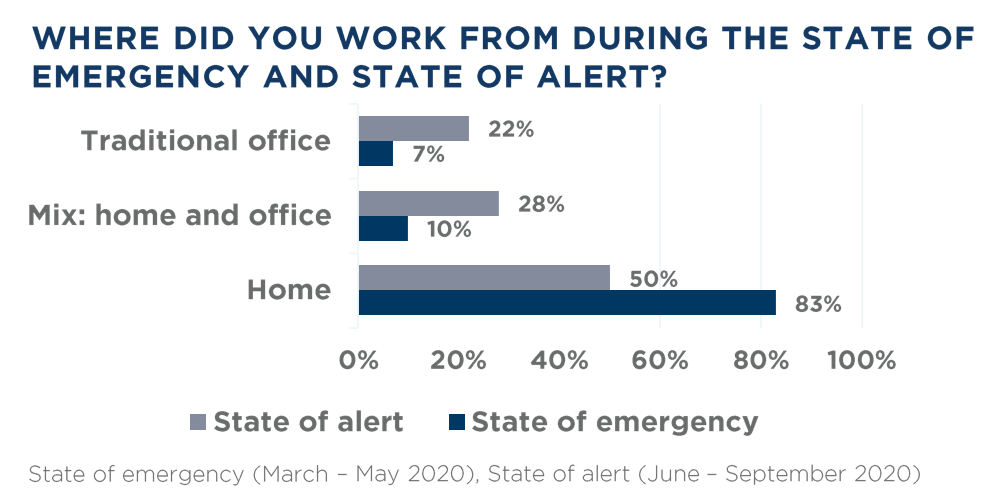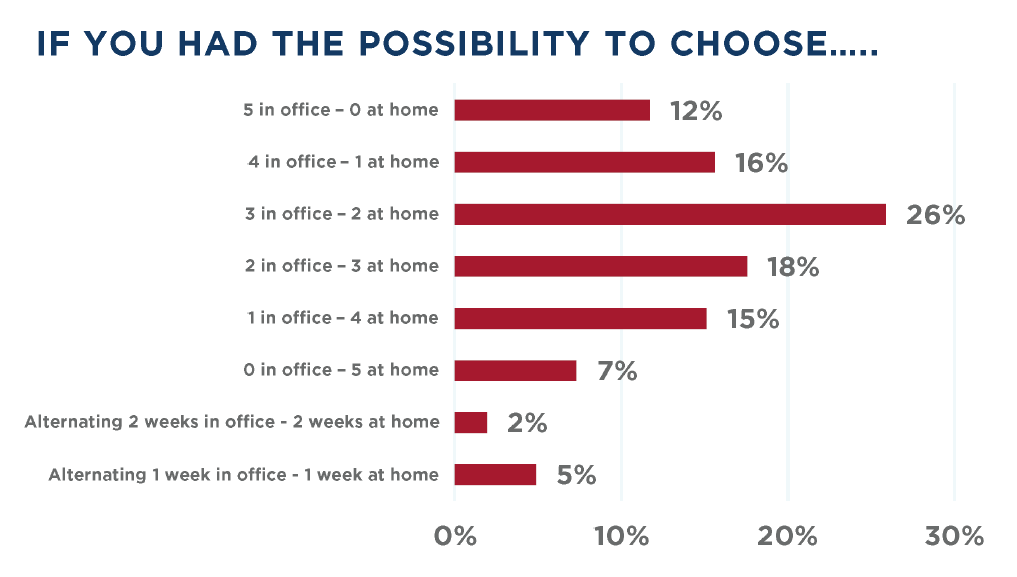
Half of the employees who normally work in office buildings continued to work mainly from home even after the state of emergency was lifted, despite the fact that, during the summer, most companies began to bring back their employees partially or through rotation in the office spaces, as shown by a research study conducted by Cushman & Wakefield Echinox regarding the working methods of employees in Romania during the COVID-19 pandemic.
Thus, if during the state of emergency (March-May 2020) 83% of the employees worked from home, their number decreased to 50% during the state of alert (June - September 2020), while 22% of the employees completely resumed their work from the office, and 28% practised a mix between work from home and work from the office, according to a study conducted between September 28th and October 8th on a sample of 205 employees.

Most of the employees managed to adapt to the new working conditions, taking into account that working from home was a less widespread concept on the local market, and the return to the office was done under special conditions, in compliance with medical safety rules and social distancing norms. Thus, 83% of the employees declared having a good experience both in terms of work from home and work from the office after returning from the alert state, the others finding this period unsatisfactory or even demoralizing from a professional point of view.
The time saved in traffic remains the main advantage of working from home, a benefit appreciated by 83% of the employees, while the additional freedom in managing working hours (56%) and cost savings (52%) represent the following favourable aspects. On the other hand, 76% of employees feel the lack of direct communication with colleagues, almost half (48%) have difficulties in separating the personal and professional hours, and 39% do not have a suitable working space at home. Moreover, 32% of employees consider that the relationship with their colleagues has worsened during the work from home period, and 21% have difficulties in managing the relationship with customers, collaborators and partners.
In this context, only 7% of the employees would like to work exclusively from home after the pandemic ends, the most desired schedule being a mix of 3 days work from the office and 2 days work from home, an option chosen by 26% of respondents.

For offices to increase their attractiveness among employees, they should be located closer to home (59%), have more green space (44%) and be safer, with a lower density (39%) and better ventilation systems (30%). The proximity to public transport is no longer a major priority at the moment, with only 17% of respondents mentioning this aspect.
Mădălina Cojocaru, Partner Office Agency, Cushman & Wakefield Echinox: “We observe among the local employees a high degree of adaptability to the current context in which the volatility of the medical situation requires a high degree of flexibility on the labour market. By analyzing according to age categories, we notice that the younger generations, without children, tend to prefer mostly working from home, while the employees over 40 years old have a greater desire to return to the office. Most companies are still looking at how they will operate after the pandemic ends, but it is becoming increasingly clear that there will be chosen hybrid solutions tailored accordingly to each organization and in which the office space will retain its central role.”



